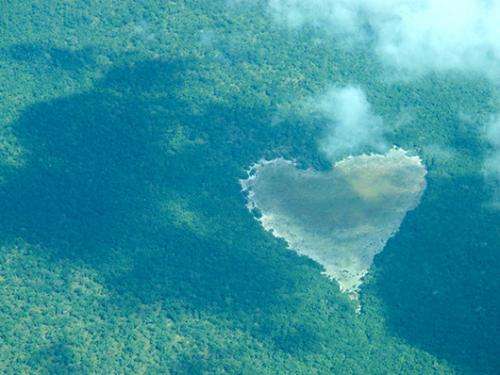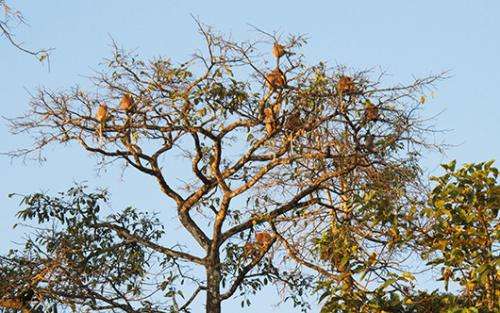Research challenges understanding of biodiversity crisis

(Phys.org) —A University of St Andrews study has found that, despite fears of a biodiversity crisis, there has in fact not been a consistent drop in numbers of species found locally around the world.
Instead, in a study of 100 communities and a total of 35,000 species that span from trees to starfish, scientists found a consistent change in which species are found in any one place.
The researchers, who were surprised by the findings, say that the study should not detract from the threat many of the world's species are under, but that policy-makers should focus on changes in biodiversity composition as well as loss.
The findings, published by the leading journal Science this week, are the result of research led by Dr Maria Dornelas and Professor Anne Magurran of the Centre for Biological Diversity and Scottish Oceans Institute at the University of St Andrews. The full text of the paper is available at: dx.doi.org/10.1126/science.1248484.
An international research team studied over 6 million observations in terrestrial, freshwater, and marine habitats from the poles to the equator. Instead of finding a loss in biodiversity, they discovered that the species inhabitance of different locations has been systematically changing over time.

Dr Dornelas said, "Contrary to expectations, we did not observe consistent loss of species through time – indeed we found as many surveys with a systematic loss as well as gain in the number of species recorded through time. This is surprising given current concerns of a biodiversity crisis and abnormally high extinction rates."
The team studied everything from trees, birds and mammals, to fish and invertebrates.
Professor Magurran commented, "We observed consistent change in species composition of communities. This surprising finding could be due largely to invasive species, which have been rapidly spreading around the globe, and the shifting ranges of species in response to climate change."
The study was carried out in collaboration with Nick Gotelli (University of Vermont, USA) and Brian McGill (University of Maine, USA). The research was funded by the European Research Council project BioTIME.
Vermont's Nick Gotelli, along with the other report authors, was keen to emphasise that the 'findings do not negate the fact that many of the world's species and habitats are under grave threat.' He added, "What we do suggest is that scientists and policymakers should expand the focus of conservation science and planning to cover biodiversity change as well as loss."
Fellow US scientist Brian McGill concluded, "Conservation scientists will need to shift from just talking about how many species are found in a place to talking about which species are found in a place. Put simply, species composition changed more often than species number, and these kinds of changes should be a focus for future study."
The findings are published by Science on Friday 18 April.
More information:
"Assemblage Time Series Reveal Biodiversity Change but Not Systematic Loss." Maria Dornelas, et al. Science 18 April 2014: Vol. 344 no. 6181 pp. 296-299
DOI: 10.1126/science.1248484
Journal information: Science
Provided by University of St Andrews



















